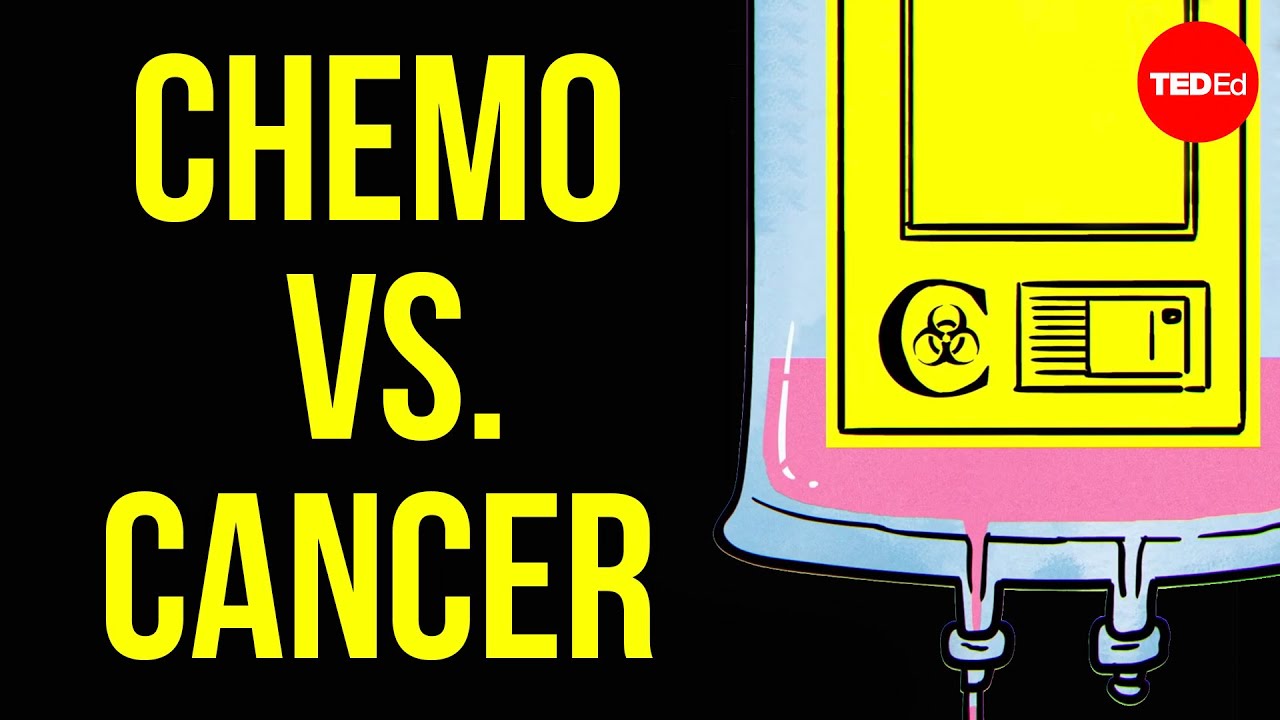Translator: Eman Sabry Auditor: Hussain Laghabi During World War I, one of the horrors of war trenches It was a poisonous yellow cloud called mustard gas. For those who aren’t lucky enough to be exposed to gas, It made the air breathable, burning their eyes, It caused massive ulcers on the exposed skin. Scientists have hopelessly attempted to develop an antibiotic for this fierce war weapon. Meanwhile, they discovered that gas damages the bone marrow of the wounded soldiers By putting an end to its ability to make blood cells. Despite these horrific effects, it did give scientists an idea. Cancer cells share a characteristic with bone marrow cells: both multiply rapidly.
So, can one of the atrocities of war To become a champion in the fight against cancer? Scientists in the 1930s checked this idea, Injection of compounds derived from mustard gas In the veins of cancer patients. It took time, experiments and errors to reach treatments that have more benefits than they do But with the end of World War II, Find out what became known as the first chemotherapy drug. Today, there are more than 100 species. Chemical drugs are given as tablets and syringes. With the use of “drugs that cause toxicity to cells,” what it means are toxic compounds for living cells. Essentially, these medications cause a degree of damage to all cells of the body, Even the sound ones. But they retain their strongest effect on rapidly-dividing cells, It is precisely the hallmark of cancer. Take, for example, the first chemical drugs Which is still used to this day and is called “alkylation agents.” Are injected into the bloodstream, Which delivers them to cells throughout the body. Once in, when the cell displays the DNA to copy it, It destroys the building blocks of the double helix structure of DNA, Which leads to the death of the cell, unless the damage is repaired.
Because cancer cells divide quickly, It receives a high concentration of alkylation agents, Its DNA is highly exposed and rarely repaired; So she dies more often than most other cells, That has the time to fix the damaged nuclear incitement, And do not accumulate the same concentration of alkylic factors. Another form of chemotherapy, contains compounds called “microtubules.” Cells have small tubes, which combine to help divide cells DNA clones, then retreat. When micro-tube anchors enter the cell, It prevents these small tubes from gathering; This prevents the cells from completing their division, and leads to their death.
These are just two examples of the six sections of chemical medicine That we use to treat cancer today. Despite its great benefits, chemotherapy has one major drawback, It affects other healthy cells in the body, which must regenerate rapidly naturally Hair follicles, mouth cells, lining of the digestive system, The reproductive system and bone marrow, are attacked almost as aggressively as the cancer attack. Just like cancer cells, these rapid production of normal cells, It means that it reaches resources at a faster pace … Consequently, they are more exposed to the effects of the chemotherapy This leads to several side effects. These include hair loss, fatigue, sterility, nausea and vomiting.
Doctors usually provide prescriptions that help control these side effects. Such as anti nausea medications. For hair loss, there are devices called cold hats that help reduce heat Around the head and narrowing the blood vessels. To reduce the amount of chemotherapy drug that reaches hair follicles. And when the chemotherapy course ends, Healthy tissue that is badly damaged by the medicine will recover, And start to regenerate as usual. In 2018 alone, more than 17 million people worldwide were diagnosed with cancer. But chemotherapy and other treatments have changed the expectations of many people. Just take the fact that over 95% of people have testicular cancer They survived, thanks to improvements in treatment. Even people with acute myeloid leukemia – a hostile type of leukemia – Chemotherapy works for about 60% of people under the age of sixty, To make the tumor subside after the first stage of treatment. Researchers are still developing more precise procedures, That attack only the cancer cells involved; This will help increase healing rates, With less damage to healthy cells, Making one of the most important ways to fight against cancer better.
.
Read More: Using the IV-eye in clinical practice – Frimley Park Hospital, UK
